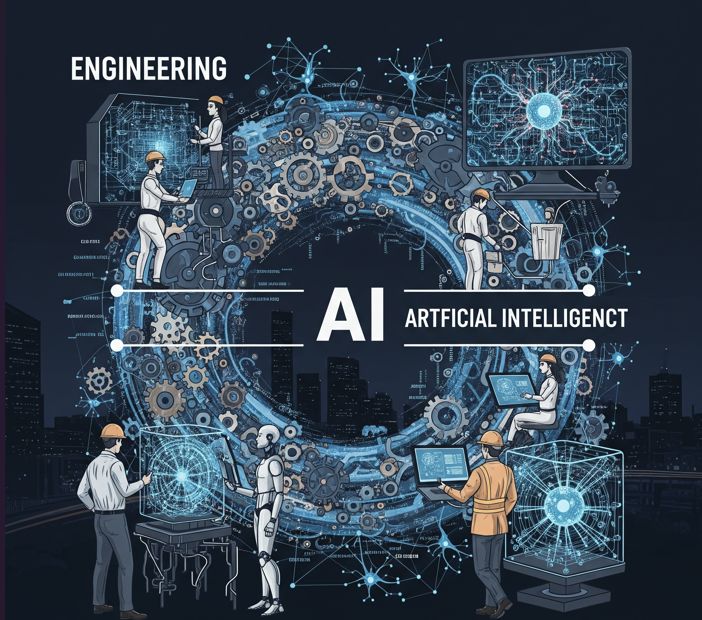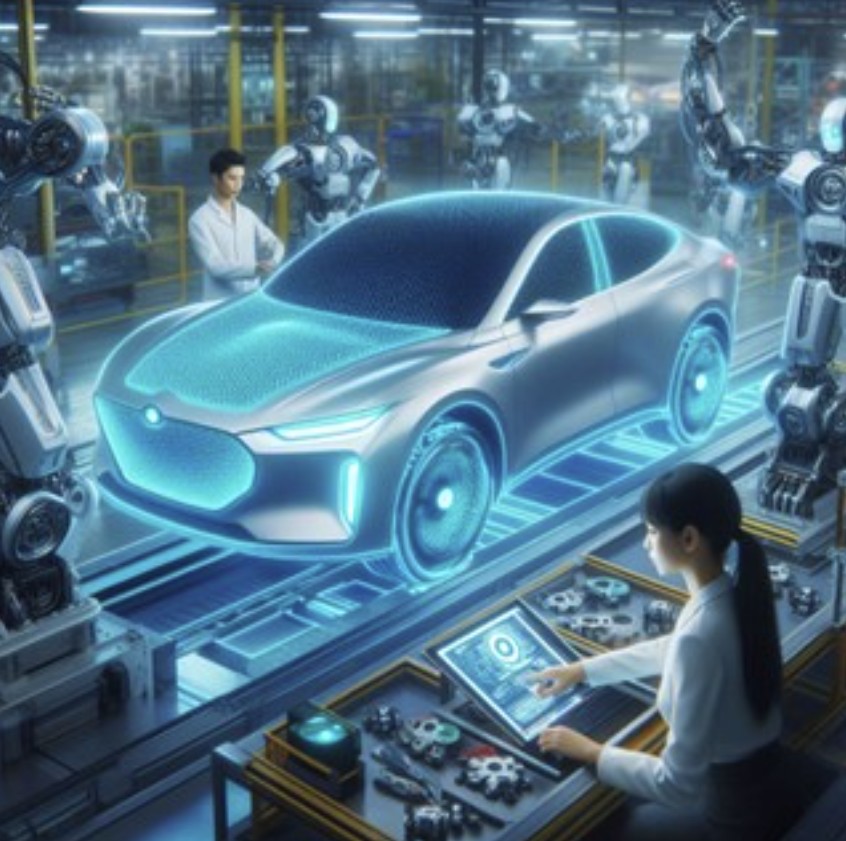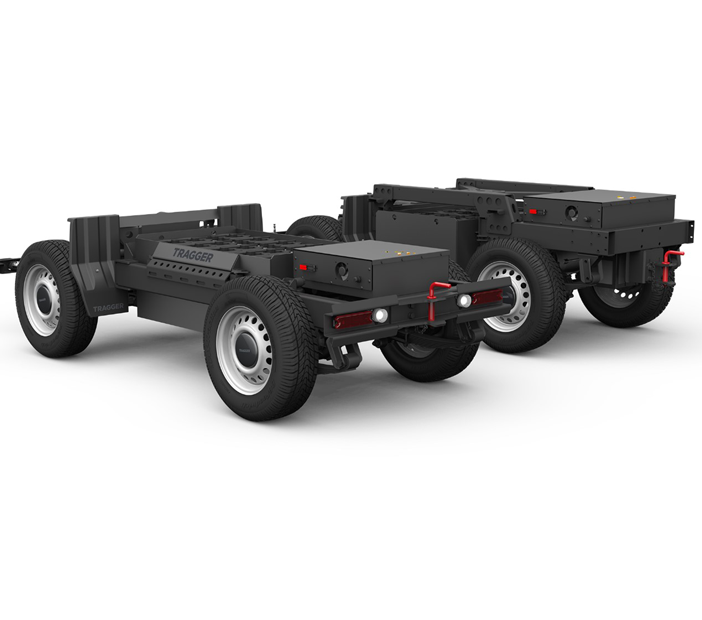From Super-Intelligent Engineers to the Era of AI-Powered
Assistants…
Another story of digital transformation
Artificial intelligence (AI), currently one of the most popular topics of our time, has rapidly entered the agenda of us automotive professionals—willingly and enthusiastically—and it seems it’s here to stay. In the broadest sense, AI refers to software technologies and smart systems that enable computer-based systems—whether large or small, simple or complex—to perform complex tasks by analyzing and learning from all types of data. In the automotive industry,
AI will be used in nearly every process, enabling the development and production of smarter, safer, and more efficient vehicles.


Key Characteristics of Artificial Intelligence
AI enables computers to develop human-like reasoning abilities by learning from designers, manufacturers, and user experiences. It has the capability to analyze vast amounts of data, recognize and process images, record information, make decisions, and perform specific tasks independently.
For example—even at today’s level—autonomous vehicles and ADAS (Advanced Driver Assistance Systems) use AI algorithms to perceive their surroundings, make rapid decisions, and support safe driving.
Market Research and Customer Experience
In the automotive industry and similar sectors, AI is expected to have a wide range of applications. Even at the early stages of the product development process, AI can offer great support in market research and customer experience analysis.
By analyzing millions of data points from online platforms and social media, AI can identify market trends and help you understand the preferences, behaviors, and needs of your target audience.
AI can capture customer data and experiences, assist in creating customer segmentation, and help you make more informed decisions in product planning and marketing strategies.
Operational Processes and Customer Relations
AI will make it easier to optimize operational processes such as inventory management and production planning, while also enabling the prediction of future demand and trends. It can provide personalized product recommendations based on customer behavior and analyze customer feedback to detect emotional responses. In this way, it will become our most powerful tool for accurately forecasting customer expectations, delivering the right products to the market, and enhancing customer satisfaction and loyalty.
Design and Engineering Processes
AI will also support us in optimizing the entire design and engineering process of automotive products and components. From sketching and concept development to simulations and analysis, AI will be our primary assistant in preparing detailed designs, technical drawings, specifications, and production process data.
Production and Maintenance Processes
In production planning and execution, AI is already being used for process planning, factory layouts, and the selection of machines, equipment, and tools. It helps increase efficiency on the production line, improve error detection, and optimize manufacturing workflows. Similarly, AI will enable us to predict maintenance needs for the vehicles we produce, enhance fault detection, and optimize service and repair processes—just as it is starting to do in manufacturing facilities.
Looking Ahead
Based on my many years of experience and accumulated knowledge, I would like to take a closer look—especially in design and product development processes—at how much more digital and fast we can become in this new world.
As mentioned earlier, both the design of new products and the improvement of existing ones—guided by customer and user experiences—will become increasingly digital. With the help of AI software and robotic systems, more inputs will be integrated into the process, allowing the development of more optimized products.
Next-Generation Design Systems
While helping us rapidly generate design drafts, these systems will also enable near-fully automated simulations and analyses, producing the synthetic data needed for the process based on real-world inputs. By providing access to more data during the design phase, they will support the creativity of design engineers, encourage more innovative concepts, assist in discovering lighter and more durable materials, and allow us to test alternative design and usage scenarios—ultimately leading to more accurate product outcomes.
Next-generation CAD/CAM/CAx systems and truly integrated PLM platforms, now enhanced with AI algorithms, are already enabling automated design processes. Based on design requirements and parameters, these systems can automatically generate new design proposals. At this stage, expert systems have begun to suggest designs that maximize component strength while minimizing weight and material usage.
Conclusion
These advanced design systems offer a more user-friendly interface, allowing engineers to review, evaluate, and modify AI-generated design proposals—freeing up their time to focus on more creative and value-added tasks. AI design systems operate within a feedback loop, continuously improving themselves. User feedback and real-world performance data help them generate more accurate and effective design recommendations over time.
As one of the greatest achievements of the digital era, AI-powered systems are becoming essential in the automotive industry—accelerating design processes, reducing costs, and enabling the development of more innovative solutions. In doing so, we will be able to create vehicles that are not only more efficient but also significantly safer.
Saffet Çakmak
Sustainability VolunteerMore
From Super-Intelligent Engineers to the Era of AI-Powered Assistants…
From Super-Intelligent Engineers to the Era of AI-PoweredAssistants…Another story of…
Sustainable Development Goals
Turkey’s New Role in Next-Gen Commercial Vehicle Transformation
Turkey’s New Role in Next-Gen Commercial Vehicle Transformation Since the…
Contact
Quick Access


